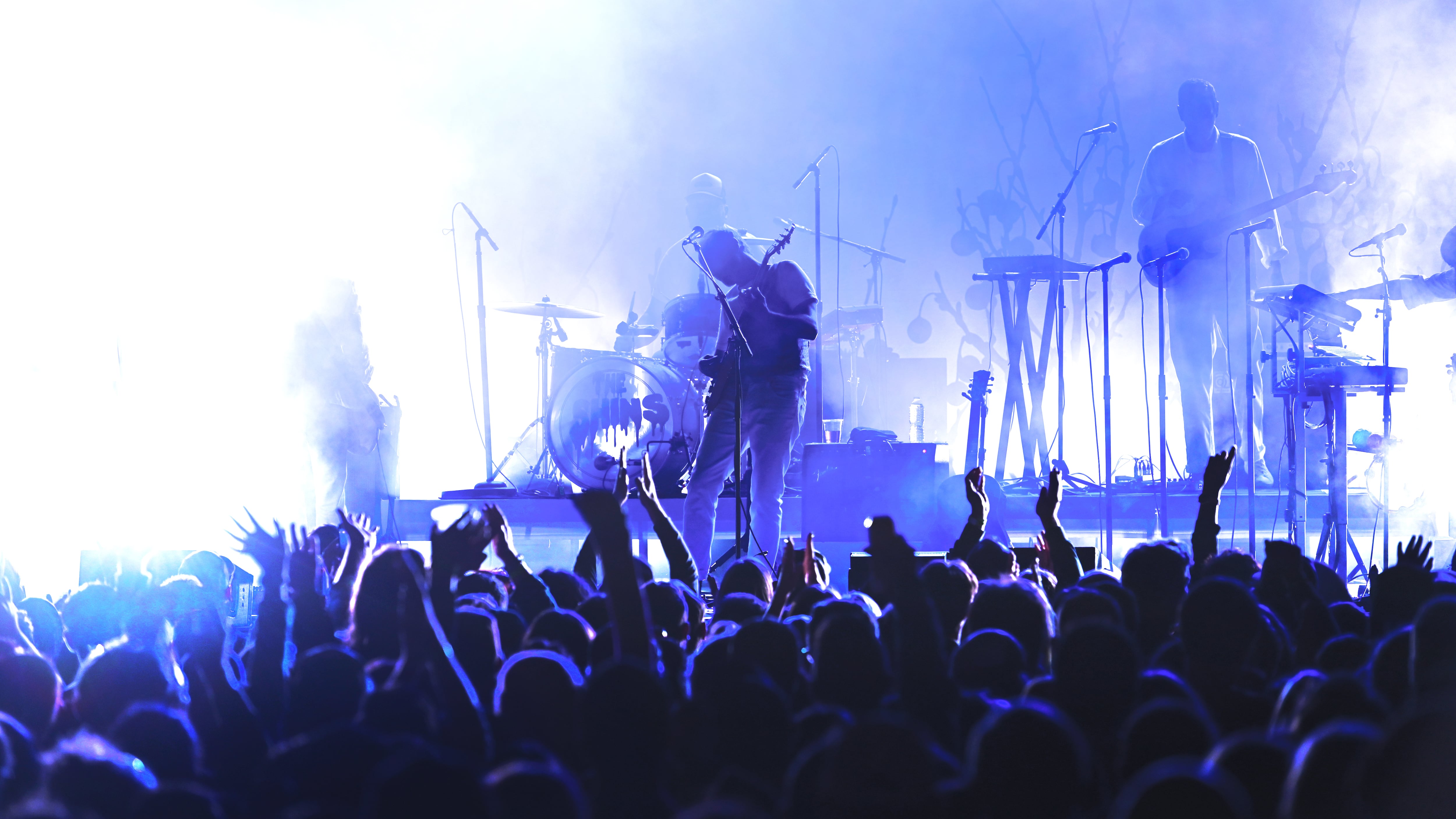Charts by Rachel Saslow
Photographs by Mick Hangland-Skill, Chris Nesseth, Nick Mendez and Allison Barr
Everybody can recite the question: Is Portland over?
Since the pandemic and riots emptied downtown two years ago, Portlanders have compulsively worried whether the bloom is off the Rose City.
Few months have provided as much nightmare fuel as this one.
In the past two weeks, WW has reported that the Benson Hotel lost a major corporate client to fears of staying the night downtown. Another three hotels faced foreclosure proceedings. A quarter of downtown office space is vacant—and that’s before Liberty Mutual Insurance told employees it would vacate nearly a dozen floors of its namesake office tower in the Lloyd District. Murders and car thefts are on pace to eclipse rates last year, which were already the highest in decades.
Related: Is Portland the new Detroit?
Bleak stuff. In light of that, the question we’re going to ask next may surprise you:
Is Portland back?
There’s actually some reason to think so. Venture into a commercial district on a Friday night in any Portland neighborhood and you’ll witness a scene straight out of 2019. Maybe busier. Those street seats aren’t just for COVID safety anymore—they’re overflow.
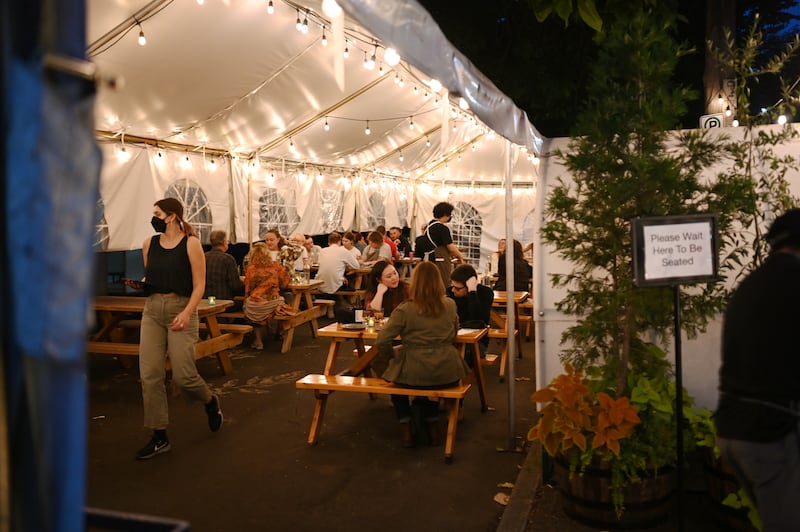
The same downtown blocks that are desolate in the daytime start bustling at sunset. Lines for Old Town nightclubs curl around the block. Pioneer Courthouse Square teems with concertgoers bopping to the Shins song that will change your life.
It so contradicts the national perception of Portland—and really, even the local one—that we felt it merited a closer look.
We wondered if our eyes were deceiving us. But statistics kept by the hospitality industry suggest a recovery isn’t just starting—it’s nearly complete. Portland’s civic life in 2022 looks like a bald man with a mullet: There’s no business in the front, but there’s still a party in the back.
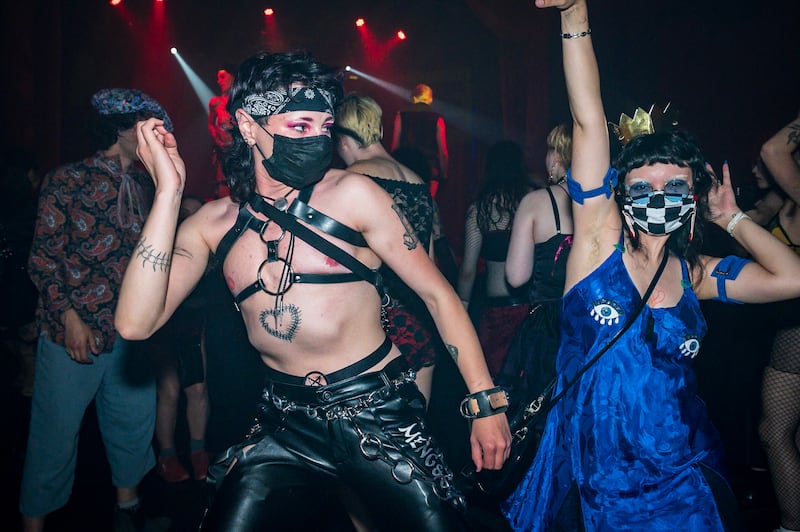
“The nighttime economy is rebounding well,” says Dan Lenzen, co-owner of the Dixie Tavern and a board member of the Old Town Community Association. “Almost everybody’s at capacity on weekend nights.”
In recent months, WW’s journalism has focused on the parts of our city that have ceased to function: police not responding to crime, employees refusing to return to the office, and poverty and mental anguish on the streets that government appears helpless to ease.
That reporting is true. But it is only half the story.
The other half can be found each week one page after the cover story, in a feature we call Street. There, our photographers have documented the return of the festivals, contests and nightlife that provide this city with a shared narrative. Without the Adult Soapbox Derby, the Waterfront Blues Festival, and Pickathon, Portland isn’t Portland. And those events returned this year for the first time since the coronavirus arrived.On the following pages, we’ll showcase our favorite shots from the summer Portland returned.
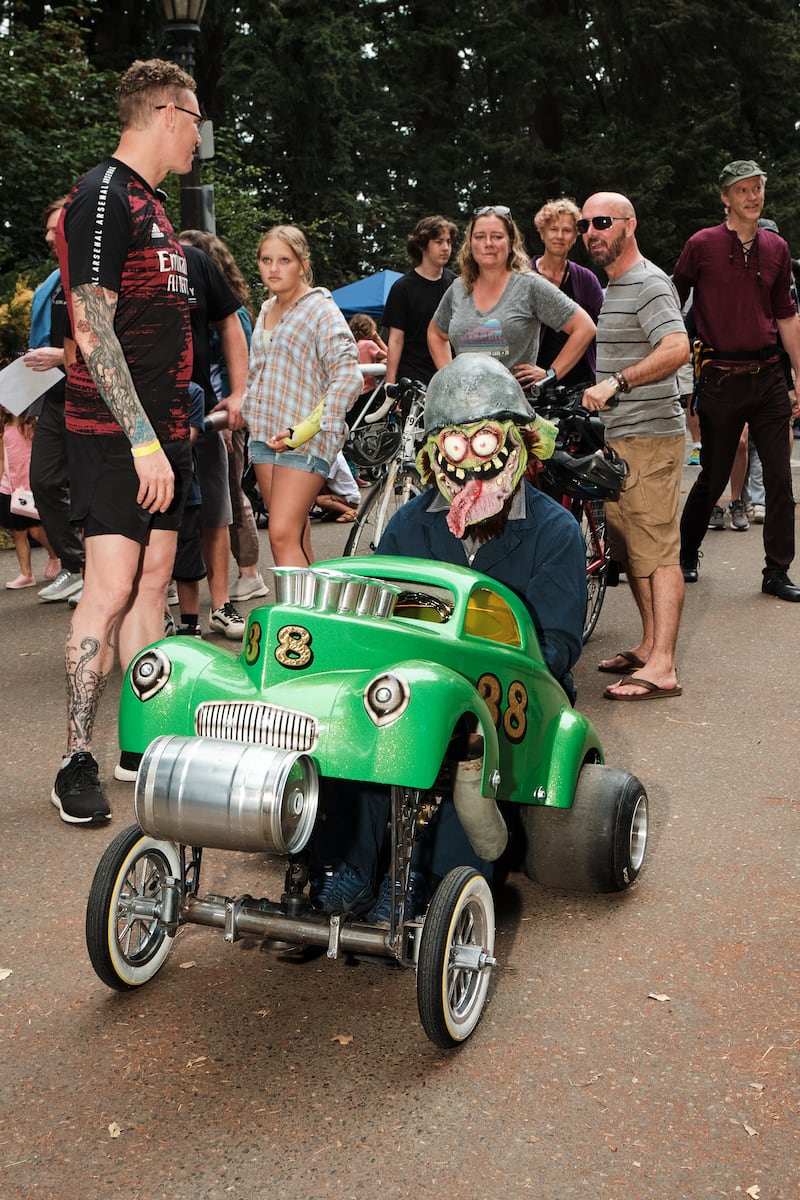
We hope they bring a smile—but this is hardly frivolous. Shared spaces and shared narratives are what make a city worth having. What is the point of living jammed together if not to run into old friends at the bar? Asking whether Portland is returning to such communal events is a way of diagnosing the city’s chances of survival.
And that matters a lot more this year. In the coming weeks, three candidates for governor will be asked how they will help Oregon’s most important city. Two of them—Christine Drazan and Betsy Johnson—are already airing TV ads that portray Portland as a cautionary tale, a hellscape and, most importantly, a liability for Tina Kotek.
It’s tempting to brush this aside—to dismiss it all as fearmongering. It’s harder to measure the truth of the claims. But, in the following pages, we’ll try.

As we looked at figures from industry groups and local governments, a pattern emerged: Portland is no ghost town, but it’s a late bloomer. This city has in large part emerged from its quarantine, but it hasn’t made a complete return to pre-pandemic life—or recouped at the rate of other places.
The same number kept showing up: Portland is at 80% of where it stood before the virus. Is that a successful recovery? The answer isn’t as clear-cut as true believers on either side of the partisan divide would like it to be.
So, is Portland back? That’s a serious question—because the answer shows us how far our home still has to go.
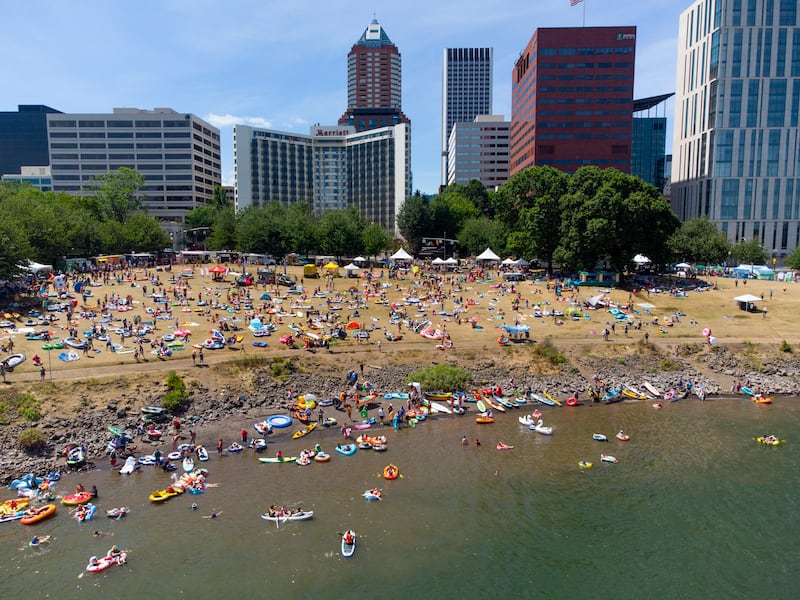
Barometer 1
Car trips show a return to social life.
Portlanders may be working from home, but they’re not staying home. Traffic counts show that driving is almost fully back to where it was before the pandemic. We will have to wait and see what the surge in gas prices will do to 2022′s final numbers.
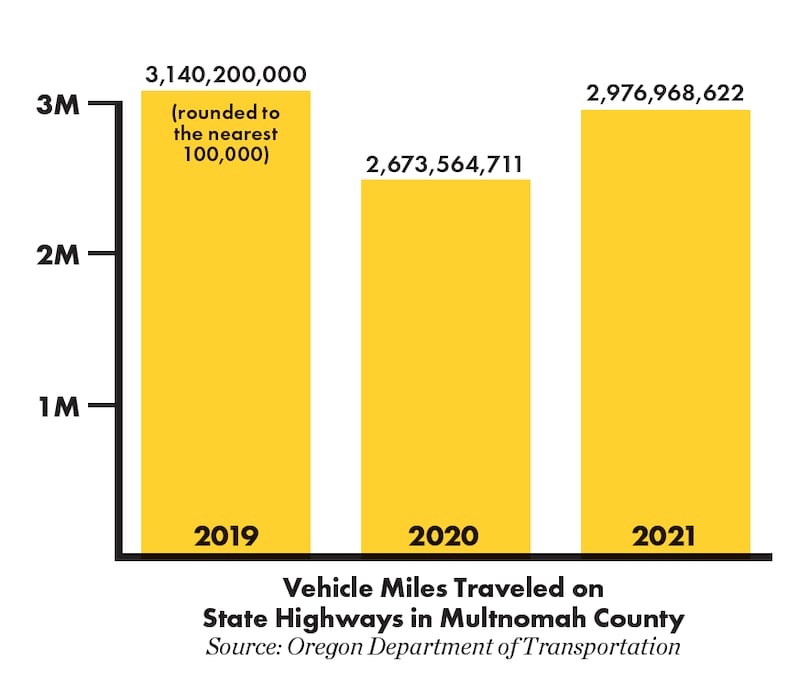
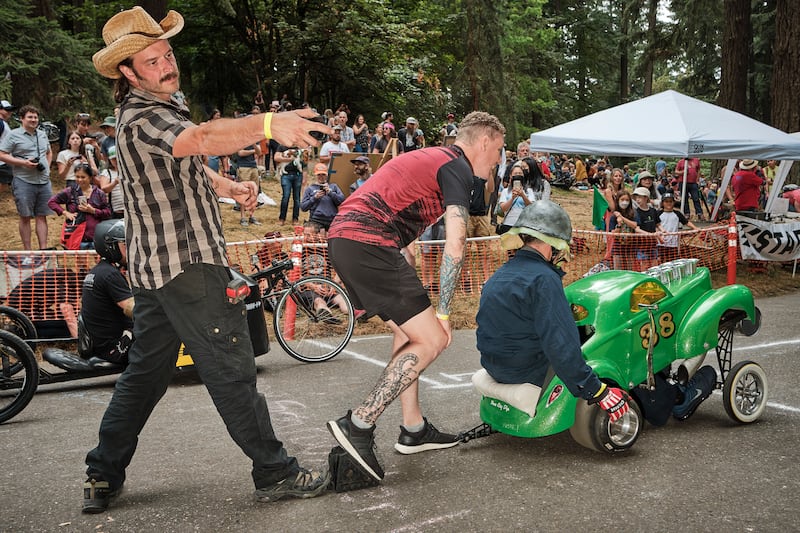
Barometer 2
MAX riders are not quite back on board.
Those car miles may be inflated by the desire of people to remain isolated in their vehicles. A better barometer of how much Portlanders are venturing back into the world? Bus and train ridership.
TriMet is luring new drivers with $7,500 signing bonuses due to a national driver shortage. But riders seem to be getting back on the bus and MAX trains on their own, though not at pre-pandemic levels. In February 2020, for example, there were 1.9 million TriMet rides; the number has hovered around 1 million for the past six months.
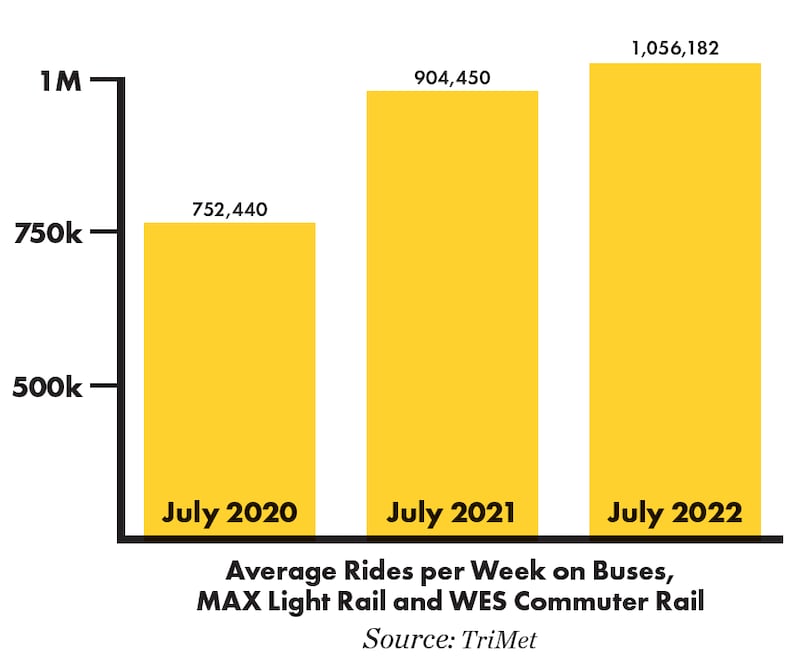
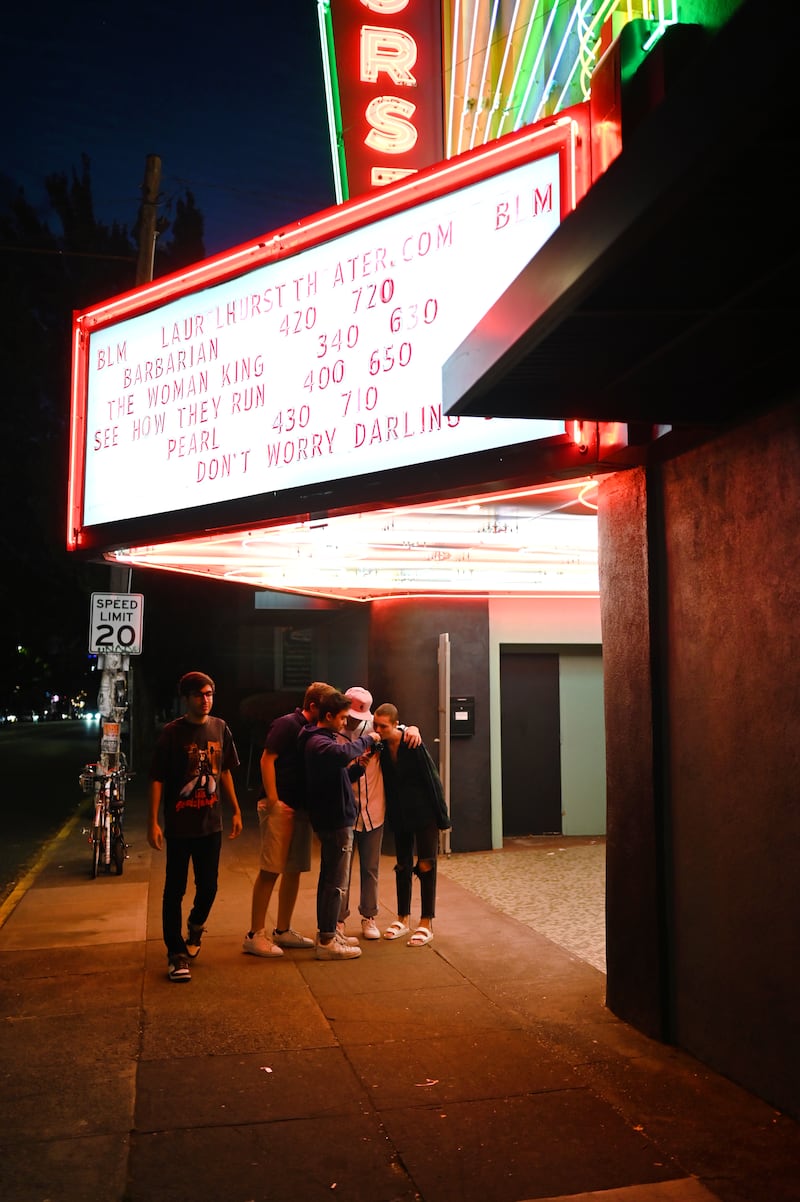
Barometer 3
Portland restaurants and bars are staffing up—but not like in the rest of Oregon.
Here’s a place where you can clearly see Portland lagging behind the rest of the state. Employment at bars and restaurants across the state is thriving, but Portland has only filled 8 in 10 jobs in this sector.
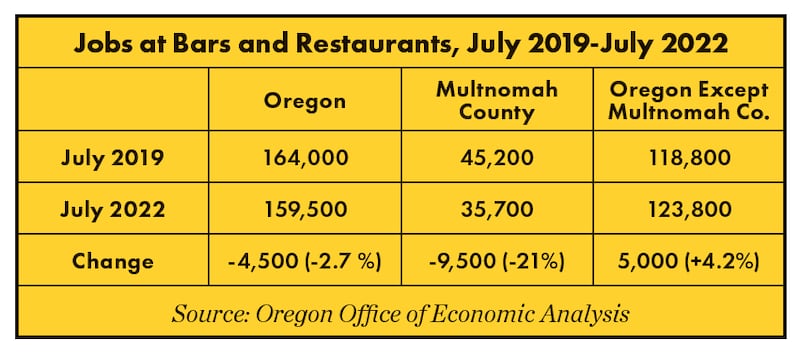
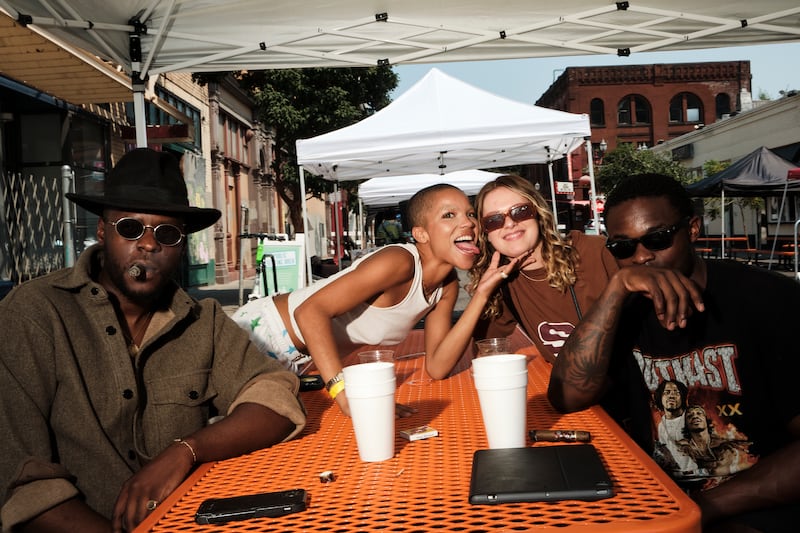
Barometer 4
Restaurant reservations trail bookings in other cities.
A tight labor market is part of why Oregon restaurants haven’t staffed up. Another is that Portland diners are still sticking to their clamshell deliveries. In-person dining here—as measured by reservations and walk-ins logged by booking site OpenTable—remains notably below pre-pandemic figures. Among similarly sized Western U.S. cities, that recovery is squarely in the middle of the pack.
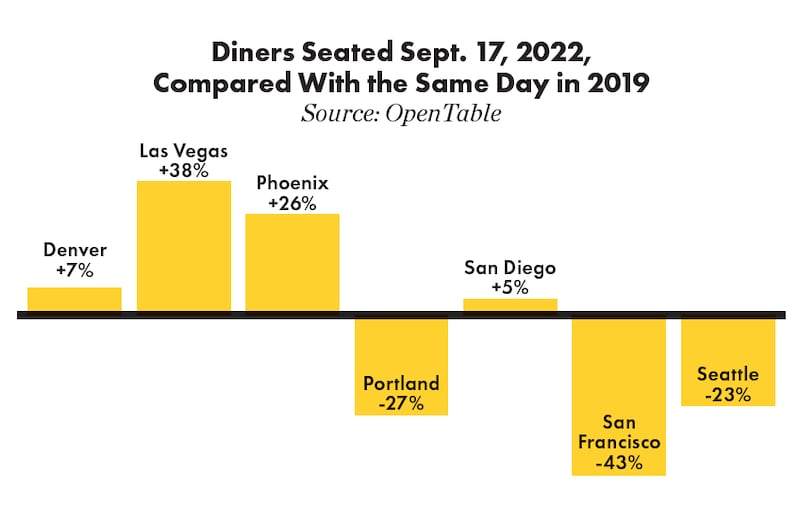
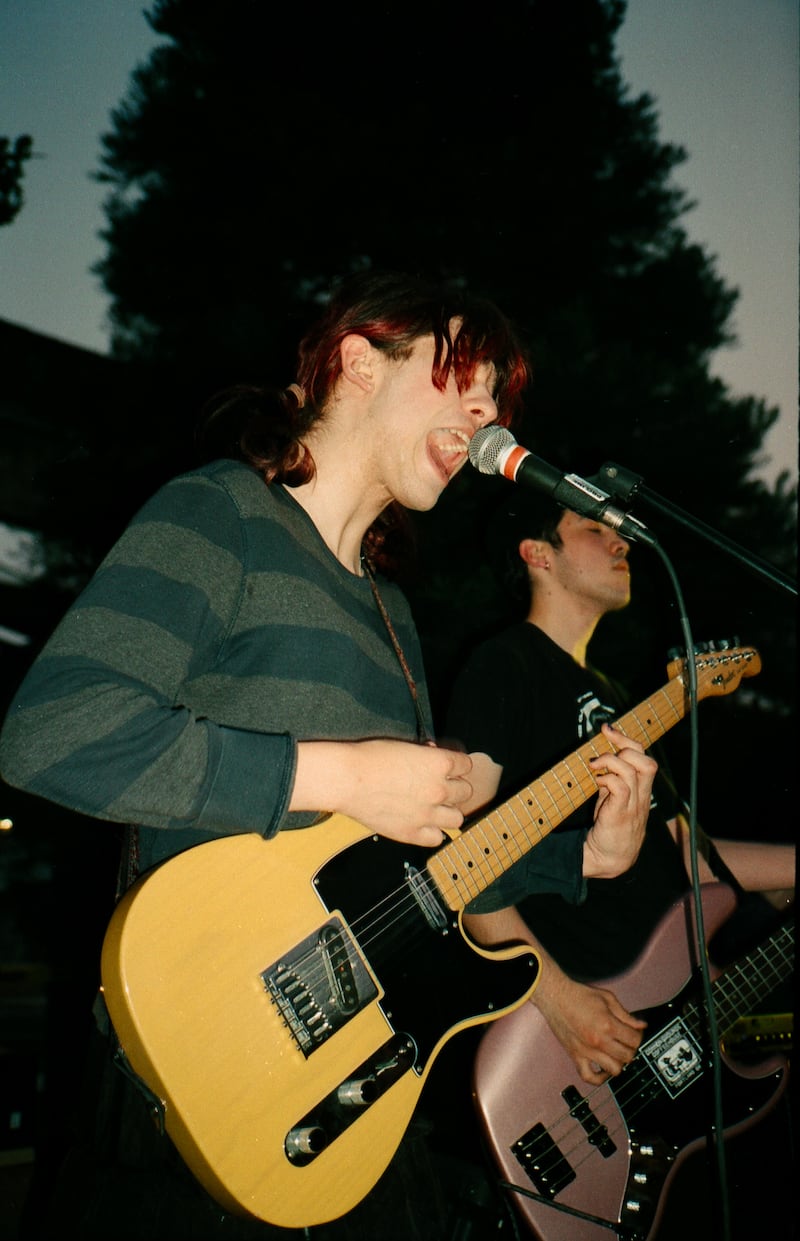
Barometer 5
Attendance at live shows is still skittish.
Live performances last year were an anxious affair, given the vaccine-card checks, KN95 masks, and the risk of side-eye from other attendees for singing or laughing too heartily. And it’s still hard to know how healthy the crowd size is at most venues—private ballrooms don’t volunteer their attendance figures.
But government-owned venues must. Portland’5 Centers for the Arts (which consists of five performing arts venues, including biggies Arlene Schnitzer Concert Hall and Keller Auditorium) is operated by Metro. In the fiscal year that just ended, attendance stood at 61% of pre-pandemic figures.
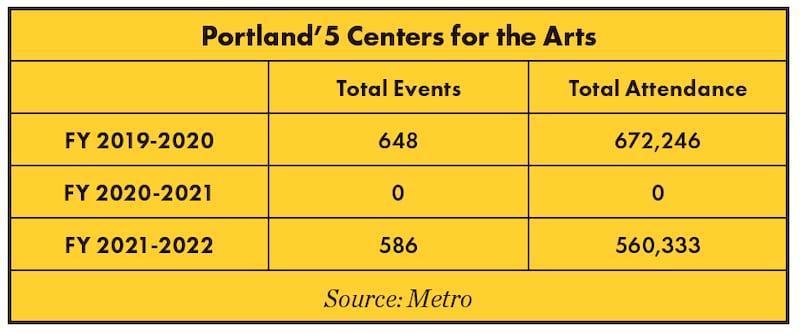
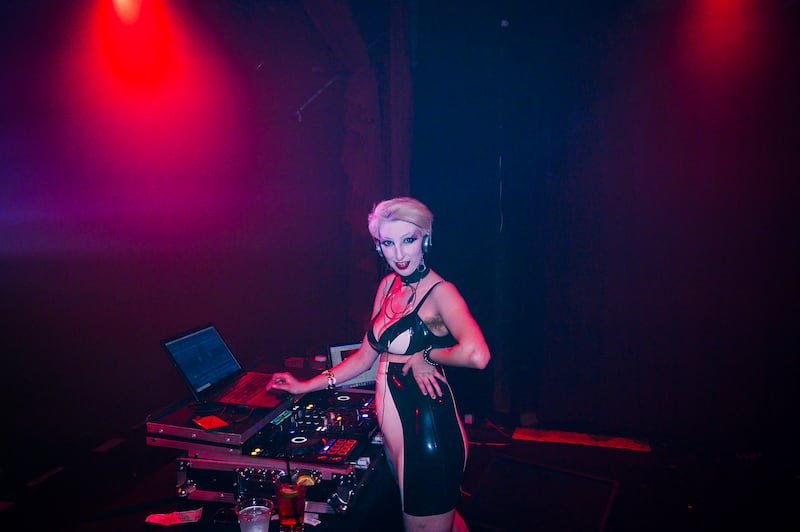
Barometer 6
Portlanders seem more confident visiting outdoor attractions—like the zoo.
After a pandemic of mostly watching the residents of the Oregon Zoo via its consistently terrific social media channels (black bears in a bathtub! Elephants eating pumpkins!), at some point, it’s time to go see the real deal. Oregon Zoo attendance is at about 80% of what it was before the plague, the zoo says.
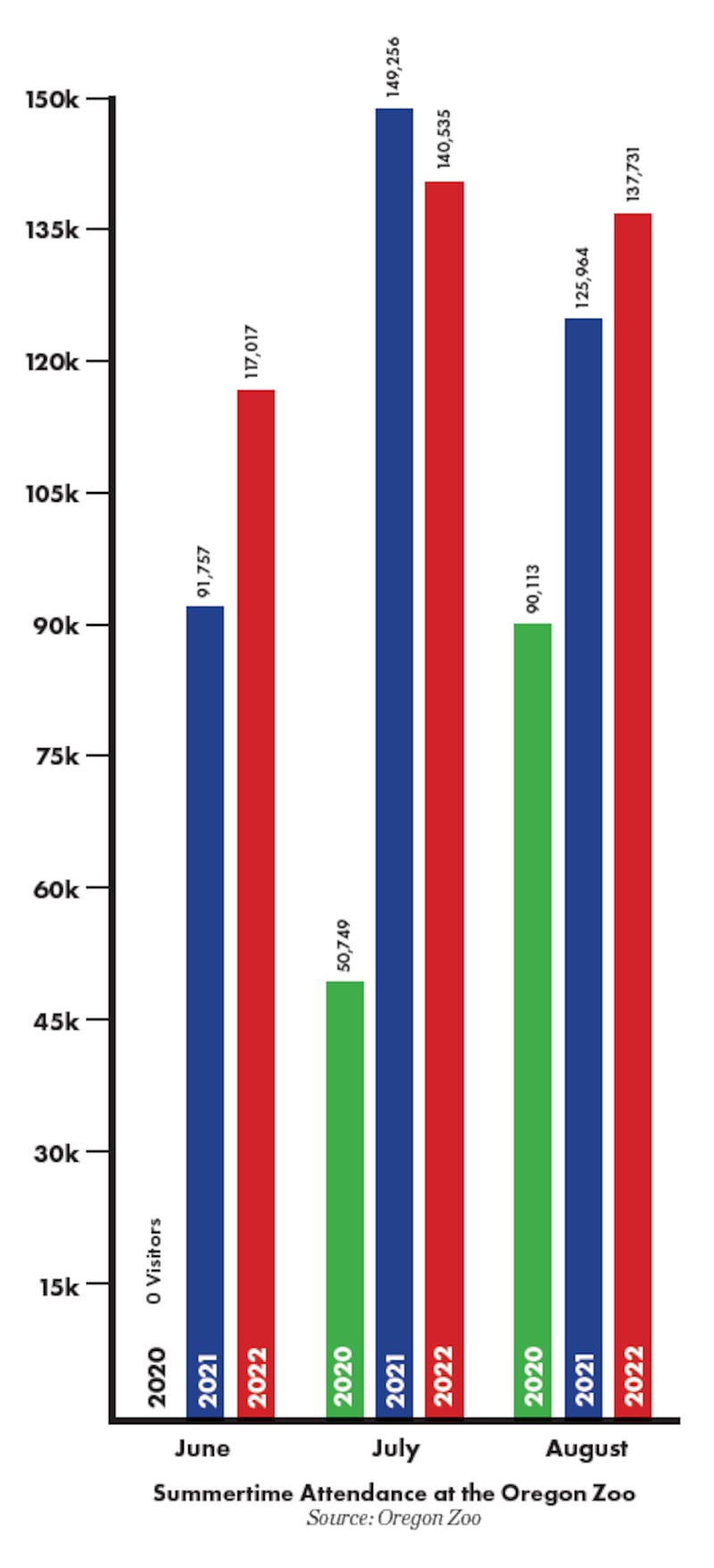
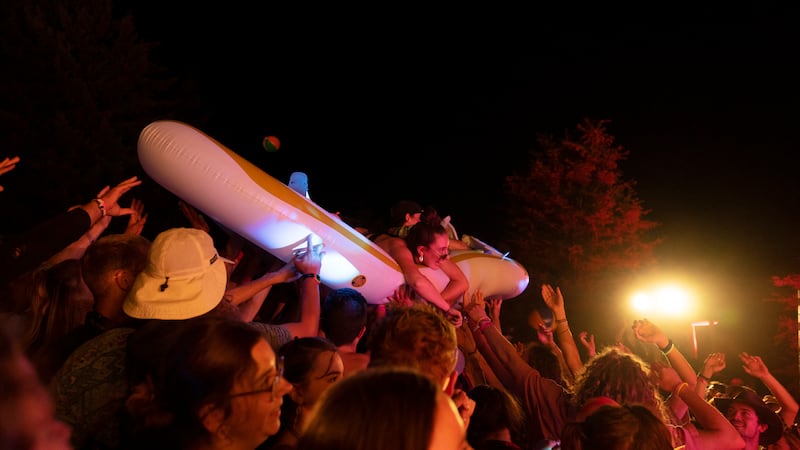
Barometer 7
Big festivals returned this summer.
The following 10 events returned in the past six months after being canceled or dramatically altered for two years.
March 13:
Shamrock Run
April 10:
Bridge to Brews
May 27-June 26:
Portland Rose Festival
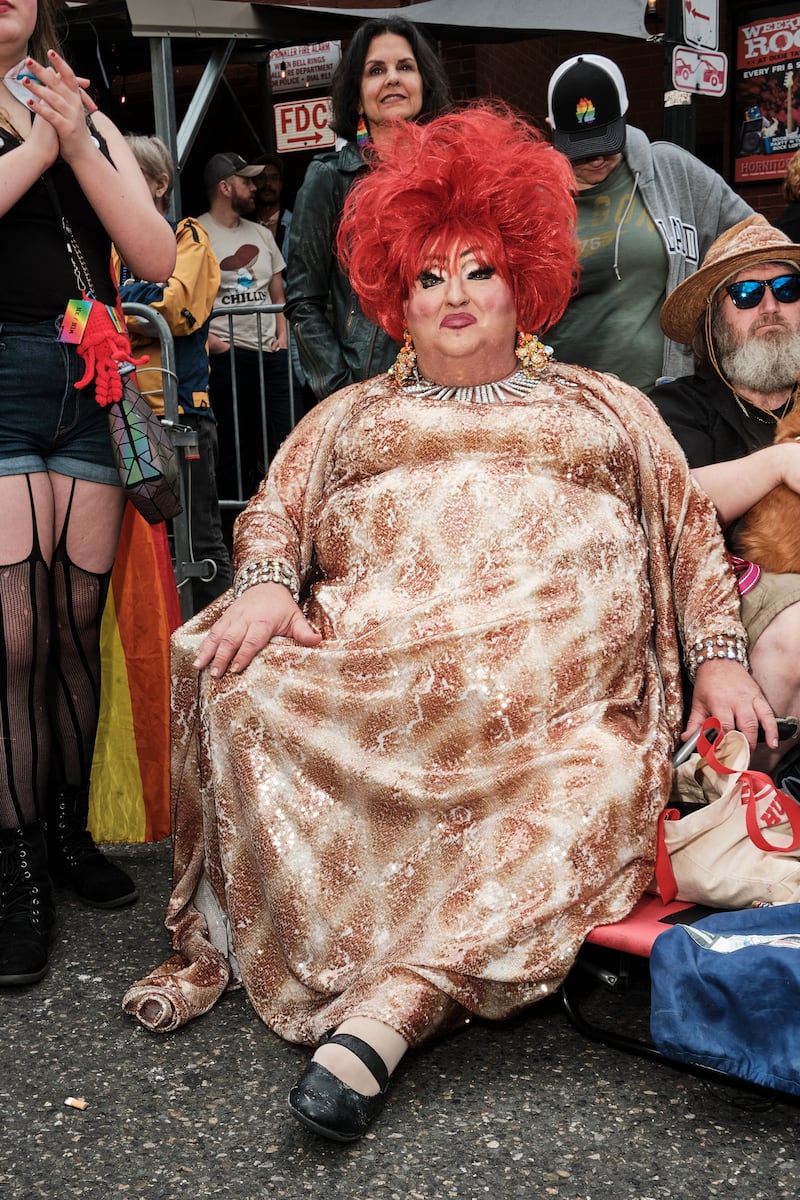
July 1-3:
Portland Craft Beer Festival
July 1-4:
Waterfront Blues Festival
July 4:
Oaks Amusement Park’s July 4th Fireworks Spectacular
July 28-30:
Oregon Brewers Festival
Aug. 4-7:
Pickathon
Aug. 20:
Portland Adult Soapbox Derby
Sept. 24:
The Wedge cheese festival
